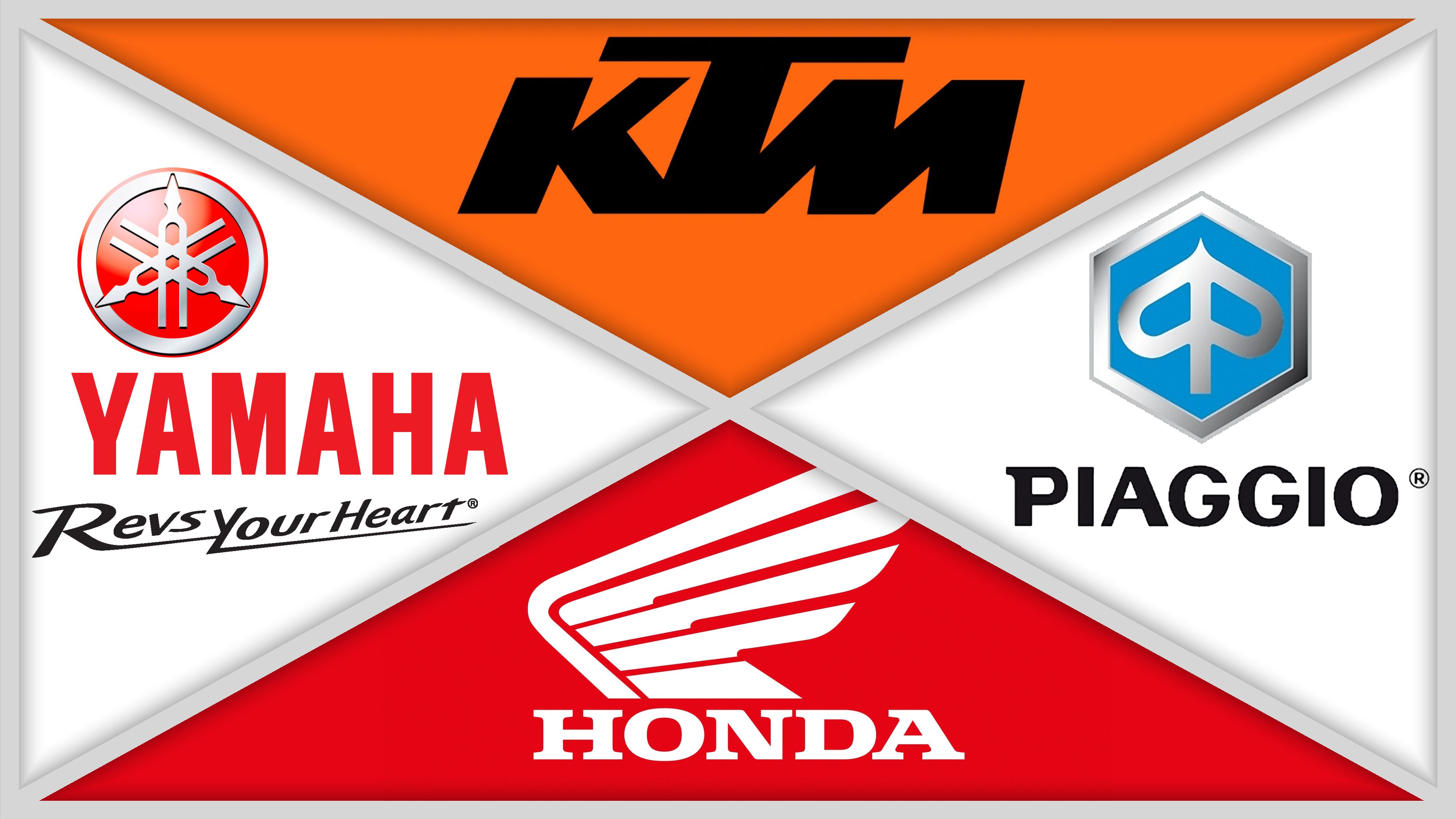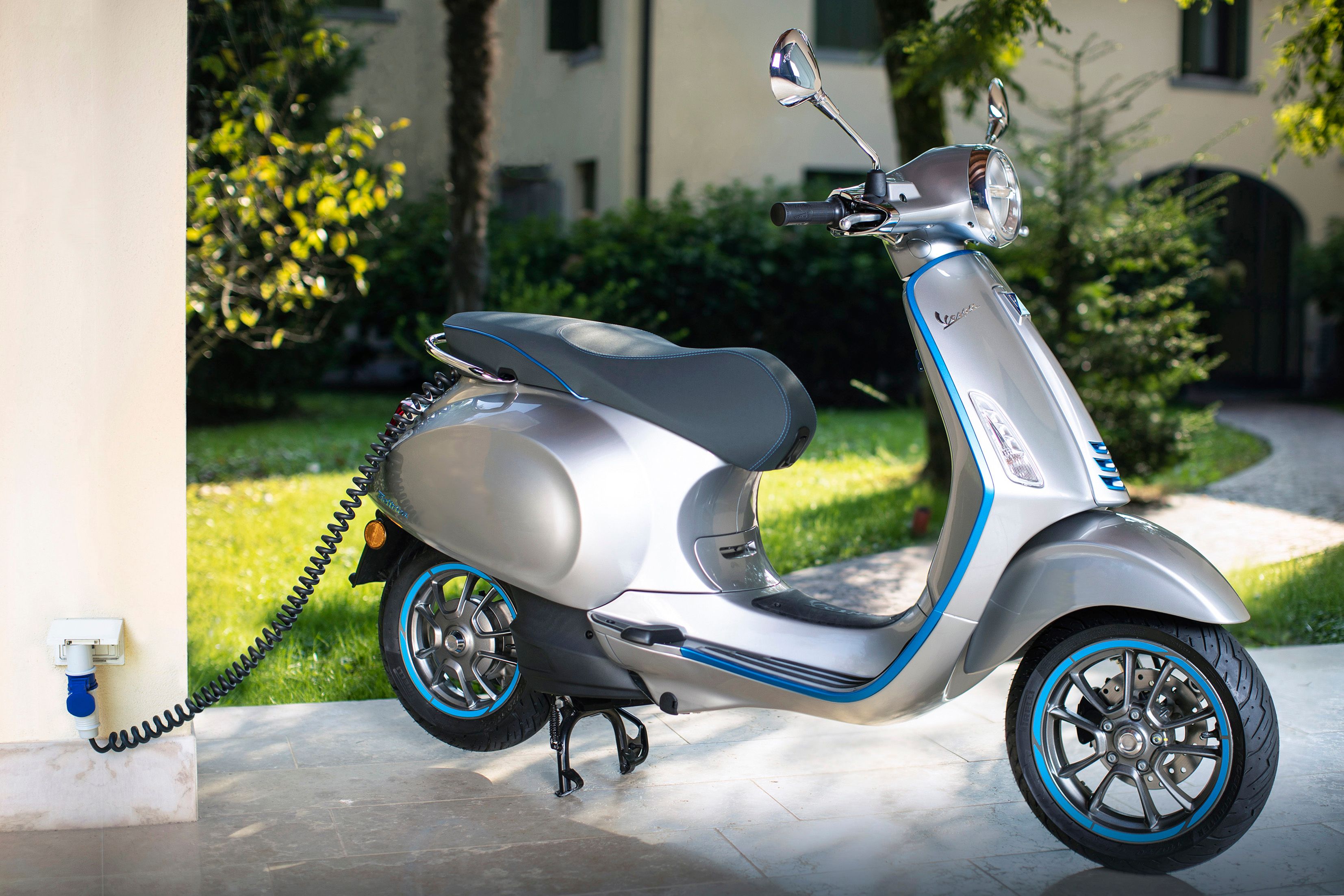A handful of the major movers and shakers within the burgeoning electric-vehicle industry have come together in a move calculated to increase EV viability as a practical form of transportation. I'm talking about industry heavies such as the Honda Motor Co. Ltd., Piaggio & C SpA, KTM AG, and Yamaha Motor Co., plus subsidiaries thereof including, but not limited to, Vespa, Husqvarna, and Moto Guzzi. All four have some sort of complete vehicle such as street scooters and dirt bikes with the exception of Yamaha who has so far stuck to Power Assist Electric Bicycles and general electric motor production for use in other applications. These marques have all come together in the spirit of the Paris Climate Agreement to form the Swappable Batteries Consortium whose purpose is reaching a uniform power-pack design that, ostensibly, will make it easier and less expensive to buy and maintain electric bikes.
Why we need the Swappable Batteries Consortium
Vespa Elettrica
“Sustainability is one of the key drivers to the future of mobility and electrification will play a major role in achieving this goal. For powered two-wheelers the constraints of electric drivetrains regarding range, charging time, and initial cost are still evident”, says KTM AG CEO Stefan Pierer. “To overcome these challenges and provide a better customer experience, a swappable battery system based on international technical standards will become a viable solution. Considering the entire lifecycle, a widespread application of batteries compliant with a common standard will support secondary use as well as circular economy. We are glad to be part of the Consortium as we strive towards our goals in the e-mobility sector.”. Considering the entire lifecycle, this accord extends to cover all L-category vehicles to include mopeds, trikes, and quads as well as proper street motorcycles. We are glad to be part of the Consortium as we strive towards our goals in the e-mobility sector.”
Mr. Pierer mentions the two-wheelers, but status quo L-category vehicles to include mopeds, trikes, and quads as well as proper street motorcycles. Yeah, that covers all the important bases and takes care of street riders as well as dirt riders right along with commuters and recreational riders/trick riders. While this may seem to be a minor achievement, the ramifications have the potential to be huge. in the same way that a rising tide lifts all boats, and since we're talking about a sector that is fighting for its own existence against the KTM Freeride and petroleum sectors, this is a good thing.
There is a concerted effort among competitors to create an environment that is conducive to further development with technology sharing, and having a fixed set of specifications will allow for greater market redundancy that will lead to ample supply, and hopefully, lower prices. Look no further than our own history for an example. In the years leading up to the War Between the States, the North had taken the step of homogenizing its rail system and had a one-size-fits-all car and rail configuration. The South, on the other hand, had no less than three different rail/car configs, and that lack of integration left the North ahead in logistics by leaps and bounds as it was able to use railroads for effective troop and materiel transportation. I consider this to be a move that is similar in that There's a boom a-comin', and that right soon..
What the Swappable Batteries Consortium means to the industry
KTM Freeride
Conspicuous by their absence are industry frontrunners such as the Italian Energica marque and U.S-based Zero Motorcycles, both of which have multiple models on the world stage at the time of this writing. I would be remiss if I left out the newly-released Harley-Davidson LiveWire and the Brammo-based Empulse TT that's apparently collecting dust on one of Polaris' shelves somewhere, but those latter two are single models and not members of a proper EV bike family as with the former two, so they have less influence overall and are unlikely to join a Euro-Asian pact at any rate.
The takeaway here is twofold. There is a concerted effort among competitors to create an environment that is conducive to further development with technology sharing, and having a fixed set of specifications will allow for greater market redundancy that will lead to ample supply, and hopefully, lower prices. I feel like this agreement heralds a new and exciting era of EV development, and I expect to see the associated companies expanding their footprint considerably in the foreseeable future. Why else would we have major marques establishing some rules and standards when their current lineups are rather paltry at best? There's a boom a-comin', and that right soon.
.



